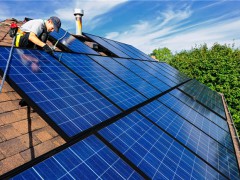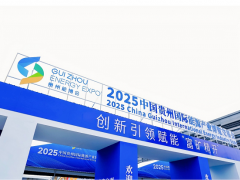據油價網2021年7月8日報道,氫已經成為一個轟動能源行業的流行詞。 盡管一些依賴化石燃料的國家感到威脅,但其他國家看到了機遇。 雖然懷疑論者一開始將其斥為“炒作”,但政策制定者和那些相信技術未來的私營部門人士已經穩步增加了賭注。 越來越明顯的是,氫的使用(無論是綠氫、藍氫還是其他顏色氫)不是“是否”的問題,而是“何時”的問題。 許多媒體一直在報道氫的潛力及其在能源轉型中的價值。 例如,《油價網》曾多次向其讀者介紹德國、日本和挪威等幾個國家改變模式的計劃。 比賽開始了,賭注很大。 然而,人們可能提出一個合理的問題:在這項技術尚未證明其價值的情況下,如此大規模的投資氫是否有意義?
首先,氫在某些行業的重要性毋庸置疑,如化工、鋼鐵和煉油,以及運輸(如重型、船舶和飛機)。 此外,專家們指出,氫可以在能源部門發揮補充作用,能源部門將越來越依賴太陽能和風能等間歇性能源。 調峰增加電力的經濟價值,否則電力將被減少,減少的電力能夠用來生產氫氣。
此外,能源載體的儲存特性使其成為洲際貿易的潛在商品。 盡管有這些優點,但它的使用也有局限性。
最重要的是生產和轉換過程中的能量損失。 當使用燃料電池時,大約20- 25%在電解過程中損耗,另外50%在轉換過程中損耗,從而使整個過程效率降到35%。 隨著能源轉型的推進,我們可能會看到更有效的轉換過程和成本降低。 然而,與此同時,替代能源存儲技術和電池也會變得更便宜。
然而,能源公司、投資者和政策制定者正在制定計劃,以大規模啟動氫經濟。 項目的清單每天都在增加。 消息靈通的在線媒體Recharge在2020年12月發布了一份世界上最大的氫項目名單。 到2030年,13個項目的裝機容量將達到50吉瓦。 在6個月的時間里,該名單已經增加到207吉瓦。
考慮到目前綠氫(從可持續來源生產)的生產能力只是2030年計劃的一小部分,這是一個顯著的發展。 然而,在行業內,由于四個原因,預計成本將會下降。
首先,大規模生產和規模經濟將顯著降低生產成本。 第二,投資可持續技術已經變得有利可圖,這意味著金融機構調整了它們的投資范圍。 第三,主要是工業化國家的政府強烈支持脫碳,這就加強了氫的使用。 最后,風能和太陽能的大規模發展將為電解槽提供廉價的電力。
“氫熱”在歐洲特別強烈,歐洲和東亞都是嚴重依賴進口化石燃料的地區。 1973年,由于石油危機,外國能源來源和高度依賴造成了重大沖擊。 它為西方國家開辟了開發北海資源的道路,雖然北海資源成本較高,但在政治上是安全的。 當地生產的氫氣也能提供同樣的好處。
進口依賴仍然是歐洲大陸的一個問題,因為歐洲大陸的天然氣儲量正在減少,對俄羅斯進口的依賴仍然存在。 因此,氫是一個機會,可以減少政治依賴,同時加強當地經濟。
然而,這些既定目標能否實現仍然不確定。 創造一個全新的全球氫市場伴隨著一系列獨特的挑戰。 首先,主要是歐洲、北美和東亞的多個政府制定了高目標,只有通過長期承諾和財政支持才能實現這些目標。 第二,需要解決“先有雞還是先有蛋”的困境:擴大生產和需求,創造一個市場。
李峻 編譯自 油價網
原文如下:
The Mega-Challenge Of Creating A Global Hydrogen Market
Hydrogen has become a buzzword that has stirred the energy industry. Although some fossil fuel-dependent countries feel threatened, others see opportunities. And while skeptics first dismissed it as a 'hype', policymakers and those in the private sector that believe in the technology’s future, have steadily increased the stakes. It is becoming clear that the application of hydrogen (whether green, blue, or another color) isn't a matter of ‘if’ but ‘when’. Many media outlets have been reporting on the potential of hydrogen and its value for the energy transition. Oilprice.com, for example, has on multiple occasions informed its readers on the paradigm-changing plans of several countries such as Germany, Japan, and Norway, to name some. The race is on and the stakes are high. However, one can ask the legitimate question of whether the massive investments make sense when the technology hasn’t proven its value yet.
For starters, the importance of hydrogen in certain sectors is unquestionable in hard to abate industries (e.g. chemicals, steel, and refineries) and transportation (e.g. heavy-duty, ships, and planes). Also, experts point out the complementary role hydrogen can play in the energy sector which will increasingly rely on intermittent sources such as solar and wind power. Peak shaving adds financial value to electricity that would otherwise be curtailed which instead can be used to produce hydrogen.
Furthermore, the energy carrier’s storage characteristics make it a potential commodity for intercontinental trade. Despite these advantages, there are limitations to its use.
The most important being energy losses in the production and conversion processes. Approximately 20-25 percent is lost during electrolysis and another 50 percent in the conversion process when using a fuel cell resulting in an overall process efficiency of 35 percent. As the energy transition advances, we may see more effective conversion processes and cost reductions. In the meantime, however, alternative energy storage technology and batteries could also become cheaper.
Nevertheless, energy companies, investors, and policymakers are making plans to kickstart the hydrogen economy in a big way. The list of projects is increasing by the day. The well-informed online media outlet Recharge published a list of the world's largest hydrogen projects in December 2020. At the time 13 projects were adding up to 50 GW until 2030. In six months the list has increased to 207 GW.
It is a remarkable development considering that the current production capacity of green hydrogen (produced from sustainable sources) is just a fraction of what is planned around 2030. However, within the industry, the expectation is that cost will decrease due to four reasons.
First, mass production and economies of scale will reduce production costs significantly. Second, investing in sustainable technologies has become profitable meaning financial institutions have adjusted their scope. Third, governments in primarily the industrialized world are strongly in favor of decarbonization which strengthens the case for hydrogen. Lastly, the massive growth of wind and solar will provide cheap electricity that can be used in electrolyzers.
The ‘hydrogen fever’ is especially strong in Europe which, together with East Asia, is a region heavily dependent on the import of fossil fuels. The foreign sourcing of energy and high dependency caused a major shock in 1973 due to the oil crisis. It set the course for Western countries to develop the more expensive but politically secure resources of the North Sea. Locally produced hydrogen could offer the same benefit.
import dependency is still an issue on the continent as domestic natural gas reserves are dwindling and the dependence on Russian imports remains. Hydrogen, therefore, is an opportunity to decrease political dependence while strengthening the local economy.
Nevertheless, it remains uncertain whether the stated goals will be reached. Creating a brand-new market comes with a unique set of challenges. First, multiple governments in primarily Europe but also North America and East Asia have set high targets that can only be reached through long-term commitments and financial support. Second, the chicken-or-the-egg dilemma needs to be resolved: scale up production and demand to create a market.
免責聲明:本網轉載自其它媒體的文章,目的在于弘揚石化精神,傳遞更多石化信息,并不代表本網贊同其觀點和對其真實性負責,在此我們謹向原作者和原媒體致以敬意。如果您認為本站文章侵犯了您的版權,請與我們聯系,我們將第一時間刪除。







